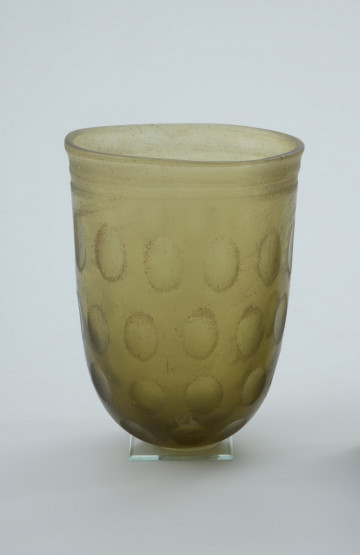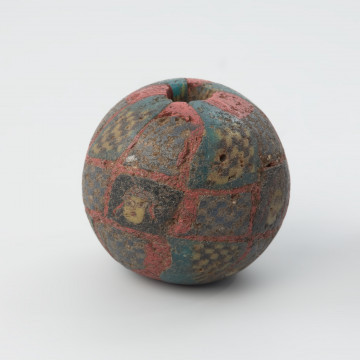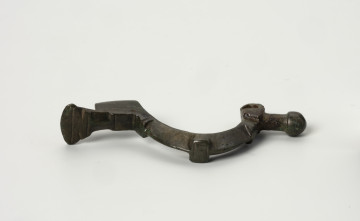
Decorated goblet
National Museum in Szczecin
Part of the collection: Antiquity
The glass beaker from Borkowice represents a type of vessel popular in the area of northern European Barbaricum between the Black Sea and the Baltic Sea. These beakers are referred to as “Kowalki-type”. The name comes from the name of the village in Western Pomerania, where the first such vessel was found. Glass beakers were made in workshops on the Black Sea coast, they had been imported to the Western Pomerania from the second half of the 3rd century until the 5th century, during the Migration Period. The displayed specimen is made of green glass with a considerable degree of transparency. This is a very important feature, as with the production technology of the time it was impossible to achieve a completely transparent glass. The vessel is decorated with rows of polished ovals. Another popular technique of decoration involved attaching glass threads to the walls. Specimens with figural decorations are less common. One such example is a beaker with an image of a gladiator found in Lubieszewo near Gryfice before World War II. In the collection of the Department of Archaeology of the National Museum in Szczecin there is another, almost identical glass beaker from Witkowo, Słupsk poviat. The Borkowice specimen was probably part of an inhumation grave in a cemetery accidentally discovered in the summer of 1892 during sand digging. During the excavation works, seven other inhumation graves were found furnished with ornaments and exclusive objects of everyday use, including the glass beaker presented here.
Bartłomiej Rogalski
Author / creator
Dimensions
cały obiekt: height: 10.2 cm, diameter: 7.8 cm
Object type
furnishings and equipment; container; vessel (container); goblet
Technique
glazing; blowing
Material
green glass
Creation / finding place
Owner
Muzeum Narodowe w Szczecinie
Identification number
Location / status

National Museum in Szczecin

National Museum in Szczecin

250 — 300
National Museum in Szczecin
DISCOVER this TOPIC
National Museum in Lublin
DISCOVER this PATH
Educational path